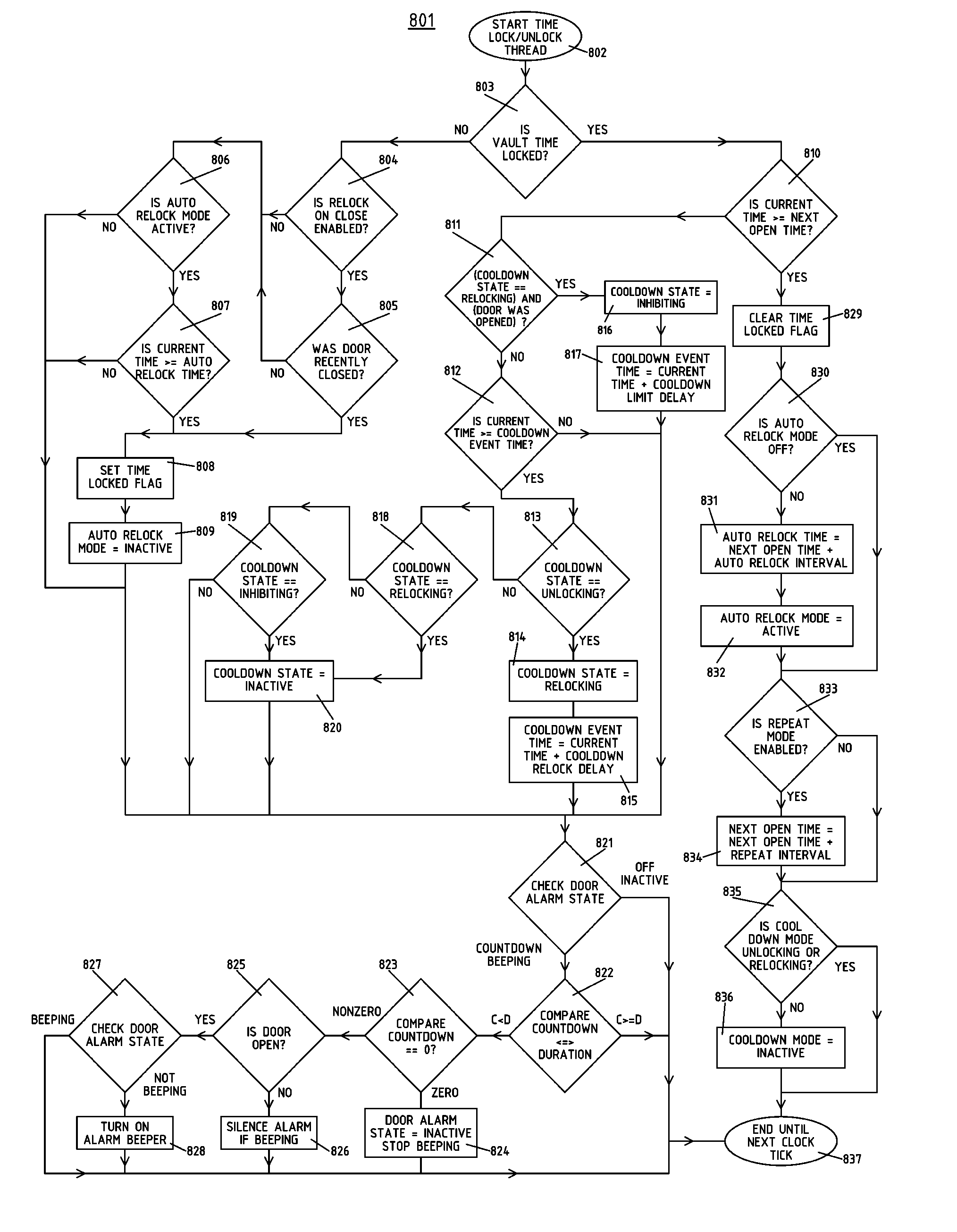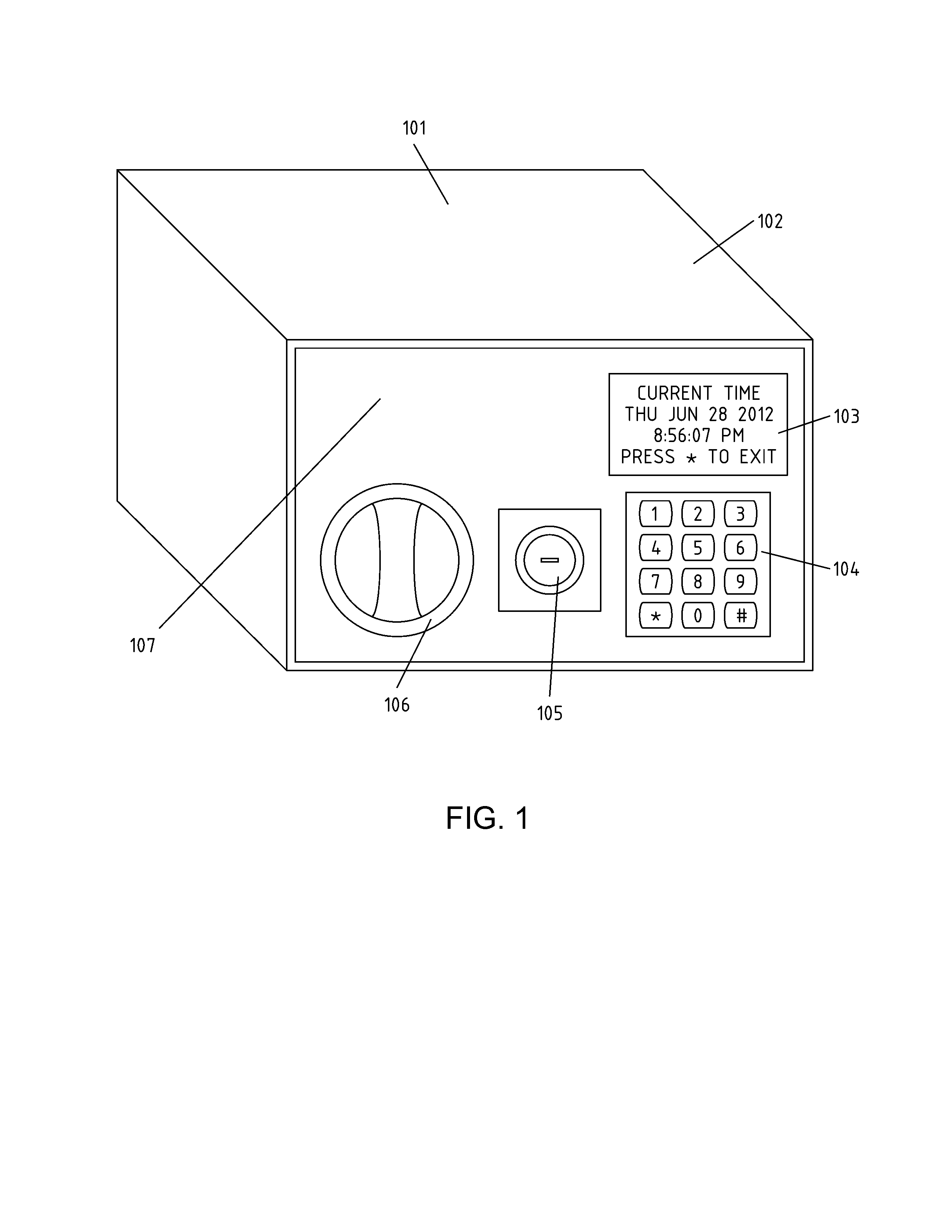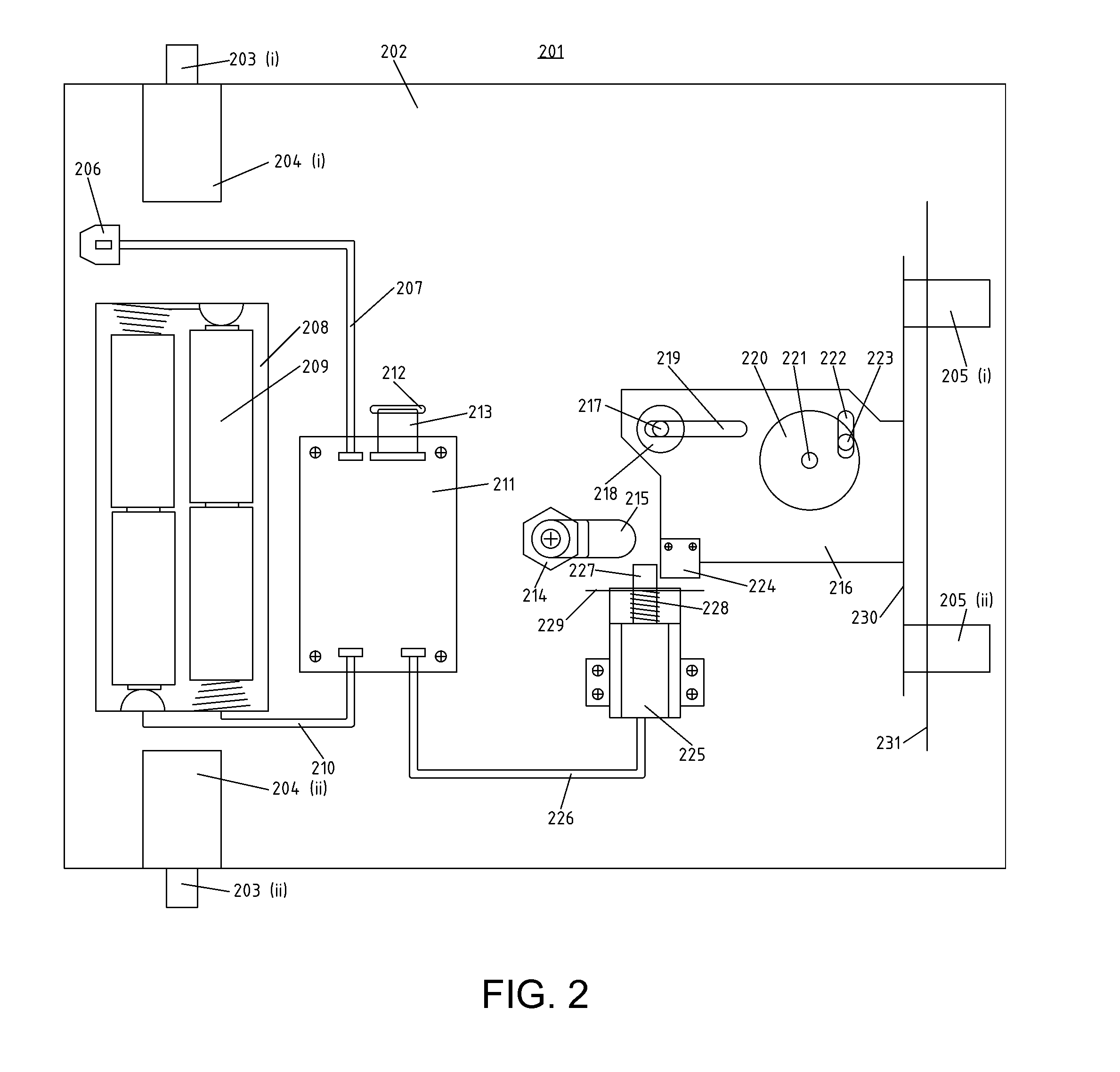Device and Method for Self-Limiting Access to Objects and Substances
a self-limiting and container technology, applied in the field of time-locking containers, can solve the problems of easy forced open, too small to store alcohol or food, and no self-control applications
- Summary
- Abstract
- Description
- Claims
- Application Information
AI Technical Summary
Benefits of technology
Problems solved by technology
Method used
Image
Examples
Embodiment Construction
[0027]An exemplary embodiment 101 is shown in FIG. 1. The container is a metal safe 102 of the type commonly used to store valuables, with a body and a door. The door panel 107 of the safe incorporates a display 103, a keypad 104, a bypass key lock 105, and an opening knob 106. The bypass key lock is shown with its removable cover plate removed.
[0028]To open the container, the user presses one of the bottom row buttons (*, 0, or #) on the keypad 104, causing the display 103 to illuminate and display the status of the device. If the device is not time-locked, the display prompts the user to enter a numeric combination access code and press the # key. If the combination entered matches the combination stored in the device's memory, the container permits access by electrically actuating its door releasing solenoid. The user then turns the knob 106 clockwise and pulls to swing the door open.
[0029]To close the safe, the user pushes the door closed and turns the knob 106 counter-clockwise...
PUM
 Login to View More
Login to View More Abstract
Description
Claims
Application Information
 Login to View More
Login to View More - R&D
- Intellectual Property
- Life Sciences
- Materials
- Tech Scout
- Unparalleled Data Quality
- Higher Quality Content
- 60% Fewer Hallucinations
Browse by: Latest US Patents, China's latest patents, Technical Efficacy Thesaurus, Application Domain, Technology Topic, Popular Technical Reports.
© 2025 PatSnap. All rights reserved.Legal|Privacy policy|Modern Slavery Act Transparency Statement|Sitemap|About US| Contact US: help@patsnap.com



